Animal breeds: man-directed selection

According to the prestigious biologist Charles Darwin, the individual who best adapts to the environment in each species advances by natural selection. Normally this individual owes his advantage over others to a special characteristic, which having greater chances of survival and/or reproduction, is more likely to appear in the following generations. Thus, after several generations, the beneficial characteristic becomes specific to the species. It is also possible that from the same ancestor very different species arise depending on the path of adaptation to the environment.
In man-led selection, however, what is sought is not a better adaptation to the environment, but from the human point of view it is about preserving or achieving beneficial characteristics for production. These characteristics can be morphological, physiological or ethological, and some have been mutated. Morphological changes have resulted in large and small dog breeds; physiologically, cows of milk and meat have been obtained; and ethological or behavioral changes have favored the submission of animals. Thus different races have been obtained within each species.

Consider XX. Until the 20th century Mendel's works were unknown, so they did not know how the characteristics of one generation to another were transmitted. Therefore, since the foundations of genetics were known, great advances have been made.
Creation of races
The oldest method used by man to obtain animals of specific characteristics is to choose and cross the best animals of each generation. Doing the same in the next generations, we expect to get more and more perfect animals. But it is a very slow and also unscientific method. On the contrary, genealogical selection is much faster and more effective. XVIII. In the 19th century English farmers began to consider their ancestors when choosing a breeding animal. They saw better results.
On the other hand, in order to characterize and refine the characteristics of a race, crosses are made between its blood components, giving rise to many current breeds, mainly to the use of specific stallions. After several generations the following uniforms are obtained. But the effects of crosses between relatives are not always favorable, since in general there is the risk of occurrence and fixation of defective genes. Populations with low genetic variability are more vulnerable and have less ability to fight diseases.

The opposite happens when mixed animals of different races increase genetic variability. The descendant has a mixture of the characteristics of his parents and is often good. Sometimes it is worth conserving the mestizo race, but other times it is exploited without looking for offspring of the mestizo, as is the case of pigs that are killed nothing more grow. On other occasions, the goal of mestizar is to adapt the race from one country to another. To do this, the male of stud brought from outside is crossed with the native females. Thus arose the pig of Vitoria and the English horse of clean blood.
If the crossing is not between races but between species, it is called hybridization. It is not always viable, of course, species that are hybridized must be close and, however, there is a risk that reproductive cells are incompatible or do not develop the fetus. In addition, hybrids are almost always sterile. But, on the other hand, they are usually very strong and hard animals, from which the human being takes advantage. The best known example is the hybrid horse and donkey, the controller.
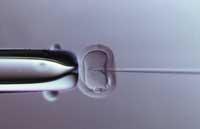
Apart from crosses, new techniques of racial improvement are also used today. Among them is in vitro fertilization that allows obtaining hybrids between incompatible species. However, it is mainly used to prevent the transfer of stallions from one side to the other, since with this technique it is enough to transport the seed itself. Another technique used in cattle is that which combines multiple ovulation and embryonic transfer: the ovaries of the best females are excited to have multiple ovulations and, after fertilization of the eggs, are placed in the wombs of other females. Finally, genetic engineering has taken a great step towards obtaining ‘design animals’.
They say he is the best friend of man

They say that the dog, besides being the best friend of the human being, is the oldest dog. The oldest canine skeletons are about 30,000 years ago and have always been found alongside human skeletons. Therefore the dog has been called Canis familiaris. The theory that the dog is a descendant of the wolf is widespread, but there are also those who think it is a dog or a coyote. According to other researchers, being such different breed of dog, they may come from different species of the genus Canis.
However, when moving from the Pleistocene to the Holocene, when tempering the climate, mammoths and bison decreased and deer and wild boars increased. Then the wolf and the man had to compete for the same hunt and, apparently, it occurred to him to take advantage of the wolf. Thus, before man became sedentary and cattle began to grow, he tried to dominate and tame an animal. According to this, the dog, before the shepherd, was a hunting dog.

Much later, the man tried to get an appropriate type of dog for each use. In the documents of the ancient Egyptians appear greyhounds and in the Molosos Assyrians. However, these were more subspecies than dog breeds. The racial phenomenon is relatively new.
In the beginning, the dog breeds were created for specific uses (hunting, keeping, grazing or help), but it seems that the desire to create singular animals has gone further. As a result, there are now races that by themselves would have great difficulties to survive. Sometimes, in order to get clean breeds, there have been errors due to the excessive crossing of blood animals. Other times, when looking for specific morphological characteristics, they have not taken into account the problems that may occur, such as congenital or hereditary diseases, or the ease of suffering certain diseases.
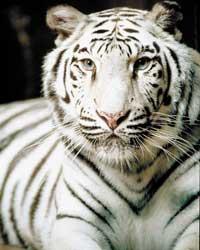
Bulldog is an extreme example of problems that may arise in the search for rare breeds. XIX. Until the mid-20th century, bulldogs were used in Britain in the fight against bulls. When these shows were banned, dog breeders directed the evolution of the bulldog another way. Intentionally, an ugly dog was wanted and, through selection, a breed has been created that finally collects serious anomalies.
The bulldog is characterized by its huge head of pelvis. The consequence is that the difficulty of childbirth causes puppies to be born by C-section. But after birth, they have difficulty progressing: they may have severe dermatitis in the skin folds, suffer from heart disease... Yes, it has lost its wild past and is a very submissive race.
However, bulldoga is not the only breed with birth problems, as the same happens with very small breed dogs (poodle toy, yorkshire, chihuahua, pomerania, border terrier...). In addition, they often have respiratory distress. Those of a large breed (rottwiler, golden retriever, San Bernardo, the great Dane...) tend to have hip and elbow malformations from birth.
One of the latest trends is the hybrid between dogs and wolves. Hybrids are a mixture of two species, but since it is not possible to predict what characteristics and to what extent you will receive them from each of them, you do not always get favorite offspring: there are so many options to get an animal with the look of wolf that is sought and with the canine behavior.
Among the cannids are born other hybrids such as wolf, dog and coyote. In addition, these hybrids can be prolific. However, as in nature each one has its territory, it does not happen this way, and it is essential the participation of man in these hybridizations.
From cats to tigers and lions

Man has long domesticated cats and over time numerous breeds have been obtained. Some of these breeds are really eye-catching, such as sphynx cats have no hair, rex breeds have curly hair and American curl breeds have curly ears back. In all three cases they are races from random mutations.
On the other hand, a series of hybridizations have been made between the species of the family of the felines and some of these animals have been managed to survive. On many occasions, the intention of hybridization has been none other than to attract the spectator to some zoo. Among them have hybridized the lion and the tiger, the homemade cat and the wild cat, the panther and the lion.
Cattle, sheep, goats and other livestock
A lot of work has also been done with other farm animals to get the most suitable breed for each type of production. Taking into account the climate and relief, the species that best meets the needs in each place has been selected, and efforts have been made to improve it. Therefore, some species have given rise to true specialists, as for example, most pig breeds have their origin in China (although the most widespread are now European), while most cattle breeds have their origin in the XIX. They came from the hand of the British livestock breeders of the nineteenth century.

Most current cattle breeds belong to the Bos taurus species and are mainly used for milk or meat. Supposedly its origin is due to the amount of water domesticated about 8,500 years ago (the wild Bos primigenius, now disappeared). Meanwhile, Asian and African cattle breeds come from bait ( Bos indicus). The zebu is characterized by its bulging on the dorsal cross, with long fallen ears and very adapted to the areas where it lives.
To take advantage of the best characteristics of both species hybridizations have been made between them, giving rise to the brahman. In the face of the European cow, the brahman supports high temperatures and humidity much better and is more resistant to parasites. In addition, Brahman has crossed with other Bovine races, giving rise to races of interest such as the brangus ( brahman x angus) and the charbray ( brahman x charolais). In addition, the hybridization of the cow with other vaults is not difficult: with the jackfruit, the bison, the Indian buffalo and the African.
Like the cow, the sheep produces meat and milk, and instead of leather hair, so the human being long ago grow the sheep, and the selection of breeds began long ago. It is believed that they were first domesticated in Southeast Asia, about 11,000 years ago. Goats were also domesticated in the same territory, but 1,500 years later. Despite belonging to different genera ( Ovis and Capra), it has managed to hybridize sheep and goats, but as curiosity and not with the intention of getting an animal with an economic yield.
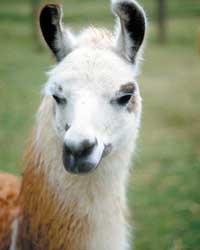
In some cases, through hybridizations or crosses, scientists have tried to save some endangered species. This happened, for example, with cider. This wild Pyrenean goat had been in danger for years and in the end failed to recover the species. However, some have not lost hope and hope that cloning will someday provide a solution.
Moreover, scientists from the United Arab Emirates recently announced an interesting hybridization. The idea was to create a new kind of livestock exploitation. They have worked for five years at the Dubai Research Centre and the result has been a bed, a hybrid between flame and camel. Both species come from an ancestor who lived 30 million years ago: the flames have developed in the Andes and camels in Asia. Although they have the same number of chromosomes, they are not easily comparable, since they are of very different dimensions, so they have had to use artificial insemination to obtain the cameras.
On the contrary, between the Andean camelids hybridizations are easy, both between alpaca and flame and between bikuina and flame. In addition, these hybrids not only survive but are sometimes fruitful. However, they are not interesting for farmers, as they are no better than their father and mother, and give problems of domestication.
Transgenic animals and breed extinction
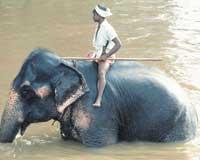
It is clear that attempts at improvement have been made with all animals beneficial to the human being (from pigs, chickens and rabbits to fish, canaries and butterflies), and in each species dozens of races have emerged, sometimes up to hundreds. Also, new technologies allow to obtain breeds of characteristics that seemed impossible in advance, so new races will still be created. For example, few would predict that a few years ago there were chickens without feathers. And in the US, the company Transgenic Pets tries to create cats that do not produce allergies to humans.
However, and even if it seems contradictory, the races are declining. The Food and Agriculture Organization of the United Nations (FAO) has announced that farmers are turning to specific breeds and that traditional livestock breeds are therefore disappearing. According to experts, two breeds are lost per week. Therefore, FAO warns of the need to implement specific projects to preserve local racial diversity.
Most famous hybrid: remote
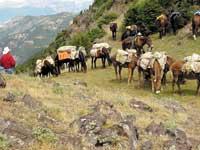
Man has long known the hybrid between horse and donkey, and not in vain, because it is very beneficial. And the control is a very robust animal and ideal for work. Therefore, it is used in many places in the world for hard work. Normally they cross the eagle and the mare to get the command, since the scam usually has serious problems to give birth to the breeding of the horse. The control is always sterile, but with favorable characteristics. On the one hand, the elbow is harder and docile than the horse and, on the other hand, it is faster than the donkey and resists better cold and humidity. The other characteristics are a mixture of characteristics between the two species: the ear is longer than that of the horse but shorter than that of the donkey, has a cry between the irrintzia and fishing, and its size depends on the breeds of the parents.
In the équidos family you can get other hybrids, such as wild donkey and homemade donkey or horse, as well as Hebrew and horse.
Animals converted into works of art In 2000, the artist Eduardo Kac made a transgenic rabbit with the aim of completing the dialogue between technology and living beings. The alba rabbit had a normal appearance with normal light, but with blue light it became fluorescent. To achieve this he introduced into the DNA of an albino rabbit the gene that gives fluorescence to the jellyfish Aequorea victory. According to the author, the use of transgenic methods can lead to other wonderful chimeras such as the union of plants and animals, or between animals and humans. These intentions, of course, have sparked debate. |





